Email Automation
Email Automation Benefits
Uncover the untapped potential of email automation and revolutionize your communication strategy with game-changing benefits.
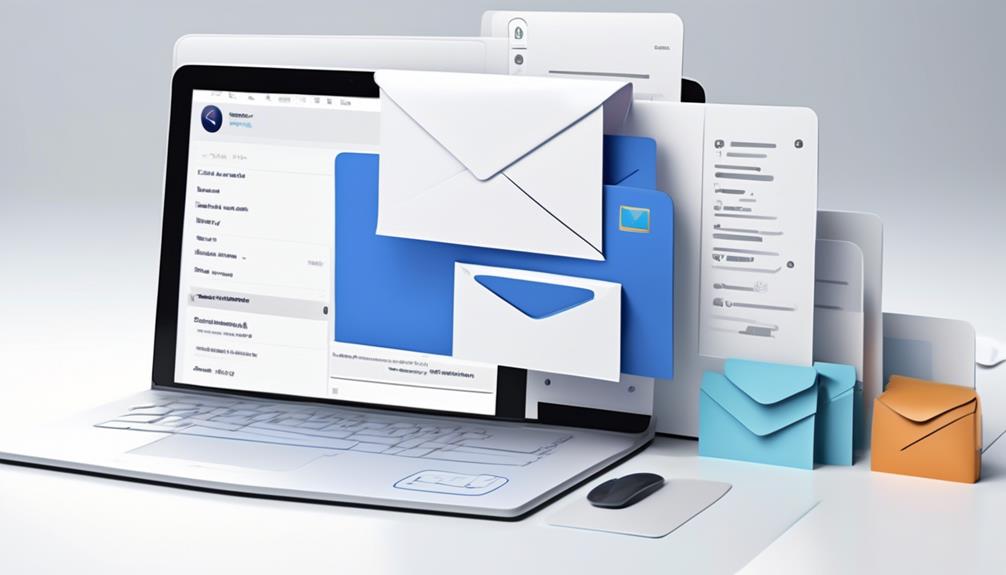
We’ve all experienced it – overwhelmed by countless emails, striving to keep our inbox under control while staying informed about the newest updates and promotions.
But what if I told you there's a way to make the entire process more efficient and effective?
Email automation is not just a buzzword; it's a game-changer for modern businesses. From personalized customer journeys to timely follow-ups and improved engagement, the benefits are undeniable.
But there's more to it than meets the eye.
Let's explore how email automation can revolutionize your communication strategy and take your customer experience to the next level.
Key Takeaways
- Personalization: Email automation allows for personalized communication, tailored to individual preferences and behaviors. This leads to higher open rates, click-through rates, and conversions.
- Increased brand recognition: Email automation helps in increasing brand recognition and understanding by delivering timely and relevant information to the audience.
- Targeted customer reach: Marketing automation tools enable strategic audience segmentation, ensuring that potential customers receive personalized content that resonates with their needs and interests.
- Cost optimization and efficiency: Email automation streamlines processes, improves productivity, and allows for better resource allocation, ultimately leading to higher conversion rates and ROI.
Streamline Email Marketing Efforts
By using email automation tools, we can efficiently engage with customers and streamline our email marketing efforts, delivering personalized and targeted content at scale. With email automation, we can send timely and relevant messages to our customers, ensuring that our marketing efforts are more effective. Through the use of segmentation, we can target specific customer groups with content that's tailored to their needs and interests, resulting in higher engagement and conversion rates. Additionally, email automation reduces the likelihood of errors in our marketing processes, ensuring that our communications are professional and accurate.
One of the key benefits of email automation is the ability to optimize costs in our marketing efforts. By automating the sending of emails, we can save time and resources, allowing us to focus on other important aspects of our business. Moreover, the detailed reporting and analytics provided by email automation tools enable us to monitor the performance of our email campaigns and make data-driven decisions to further enhance our marketing strategies.
Personalized Customer Journeys

We can't underestimate the power of customized communication in our email marketing efforts.
Personalized customer journeys allow us to tailor our marketing messages to match the unique preferences and behaviors of each recipient.
Customized Communication
Customized communication, driven by personalized customer journeys, plays a pivotal role in enhancing customer engagement and tailoring interactions to individual preferences. By leveraging behavior patterns and customer attributes, businesses can add a personal touch to their communication. This tailored approach not only fosters stronger relationships but also increases customer satisfaction.
Email automation enables the delivery of more relevant and targeted messages, resonating with the specific needs of each customer. As a result, personalized communication can lead to higher open rates, click-through rates, and conversions.
The ability to craft customized communication based on the unique characteristics and actions of each customer is a powerful tool for businesses looking to maximize the effectiveness of their marketing efforts and build lasting connections with their audience.
Tailored Marketing Messages
Tailored marketing messages, also known as personalized customer journeys, are instrumental in delivering customized content and communication that align with individual customer preferences and behaviors. This personalized approach allows for more effective lead nurturing and customer retention.
Here's why tailored marketing messages are crucial:
- Segmenting and targeting specific customer groups, leading to more effective and impactful marketing campaigns.
- Creating more relevant and engaging interactions with customers, increasing the likelihood of conversion and customer satisfaction.
- Leveraging automation to deliver individualized messages, ensuring that each customer receives content that resonates with their unique needs and interests.
Timely Follow-Ups
When it comes to email automation, timely follow-ups are crucial for maintaining momentum and nurturing leads.
Automated scheduling allows us to reach out to potential customers at the right time, improving our response time and increasing the chances of conversion.
Automated Scheduling
By automating scheduling, we ensure timely follow-ups with customers and prospects, enhancing customer satisfaction and streamlining our appointment management process. With email automation, we can schedule follow-up emails to be sent at the perfect time, ensuring that no important follow-up or appointment is missed. This not only saves time and effort but also maintains a consistent and professional communication approach.
Automated scheduling helps in nurturing leads and improving conversion rates by ensuring that prospects are engaged at the right time. It also streamlines the process of setting up and managing appointments, allowing us to focus on building relationships rather than getting caught up in administrative tasks.
Improved Response Time
To enhance customer satisfaction and ensure prompt engagement, timely follow-ups are crucial in building strong relationships with leads and customers. With email automation, response time to customer inquiries and actions is significantly improved.
Automated follow-up emails can be efficiently deployed, preventing leads from slipping through the cracks and increasing conversion rates. Timely responses to customer actions, such as purchases or inquiries, are essential for building trust and satisfaction.
By leveraging email automation for timely follow-ups, businesses can enhance customer engagement and loyalty, ultimately strengthening the customer relationship. This not only improves customer satisfaction but also amplifies the effectiveness of marketing efforts.
Therefore, prioritizing improved response time through email automation is a strategic approach to nurturing leads and cultivating long-term customer relationships.
Improved Engagement
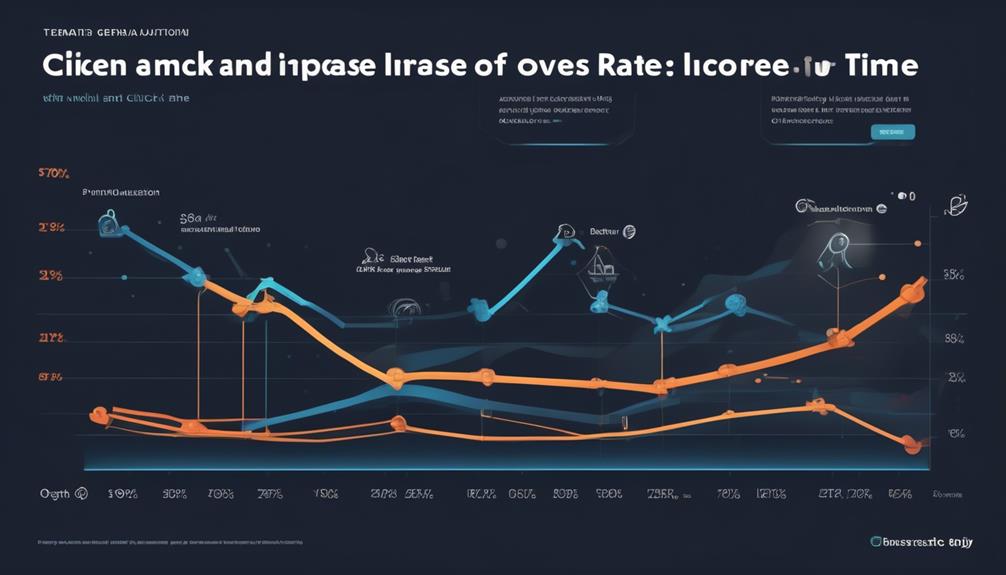
With email automation, businesses can achieve improved engagement by delivering personalized, timely, and relevant content that enhances the customer experience and fosters loyalty. This can be accomplished through targeted and tailored communication, leading to increased interaction and customer retention. By staying connected with relevant messages, businesses can strengthen their relationships with customers, ultimately improving the customer lifetime value.
Additionally, re-engagement campaigns can help revive the interest of inactive subscribers, leading to enhanced engagement and brand recognition.
Email automation enables businesses to connect with their audience on a deeper level, providing them with content that resonates with their needs and interests. Through personalized communication and data-driven insights, businesses can gain a better understanding of their prospects and customers, leading to increased engagement and interaction.
Efficient Workflow

Implementing email automation streamlines repetitive tasks, saving time and effort in email marketing processes. It allows for efficient workflow management, which is essential for maximizing productivity and achieving success in email marketing campaigns. By automating various aspects of email marketing, businesses can optimize their marketing strategy and achieve a higher return on investment. Here's a comparison of the time and money saved when using email automation for efficient workflow:
| Tasks | Manual Workflow | Automated Workflow |
|---|---|---|
| Email Scheduling | Time-consuming and manual | Automated and scheduled |
| Customer Segmentation | Requires manual sorting | Automated based on criteria |
| Personalization | Limited due to time constraints | Highly personalized and scalable |
| Reporting and Analysis | Manual data collection and analysis | Automated tracking and reporting |
| Lead Nurturing | Time-intensive and inconsistent | Consistent and targeted communication |
As demonstrated in the table, the efficiency gained from email automation translates into significant time and cost savings. This streamlined approach frees up valuable resources, allowing marketers to focus on creating impactful content and refining their overall marketing strategy. Ultimately, implementing email automation for efficient workflow is a crucial step towards achieving optimal results in email marketing.
Enhanced Customer Experience
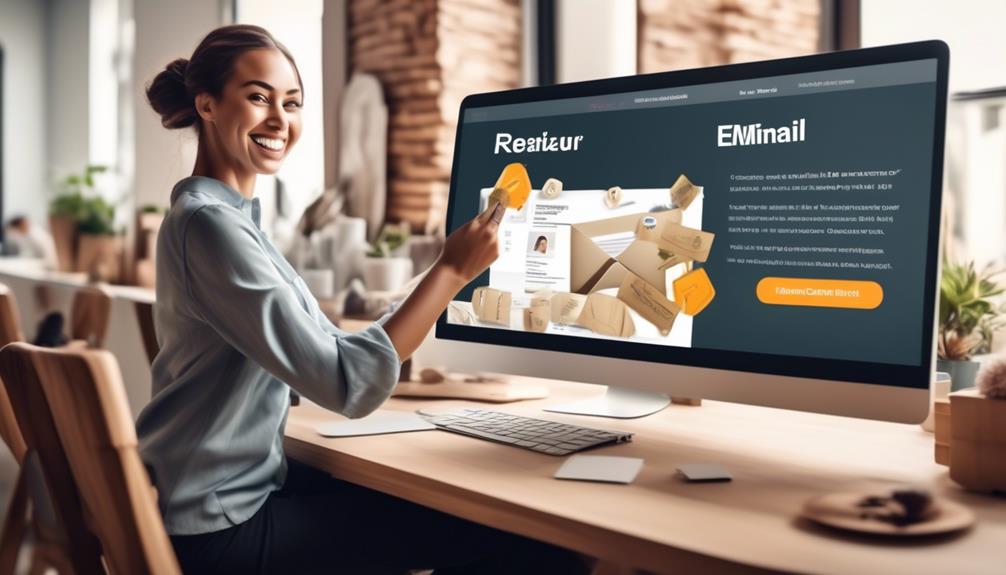
Enhanced customer experience is a key factor in driving business success and fostering strong brand loyalty. Email automation plays a pivotal role in achieving this by allowing businesses to deeply understand their customers and cater to their needs effectively. Here's how email automation contributes to an enhanced customer experience:
- Personalization: Automated emails can be tailored to individual preferences and behaviors, creating a more personalized interaction with the customer base.
- Targeted Communication: Segmentation based on user attributes and behavior enables businesses to send more relevant and targeted messages, thus improving customer satisfaction.
- Reengagement: Automation tools help in reaching out to disengaged users, reigniting their interest, and ultimately enhancing the overall customer experience.
Increased Product Awareness
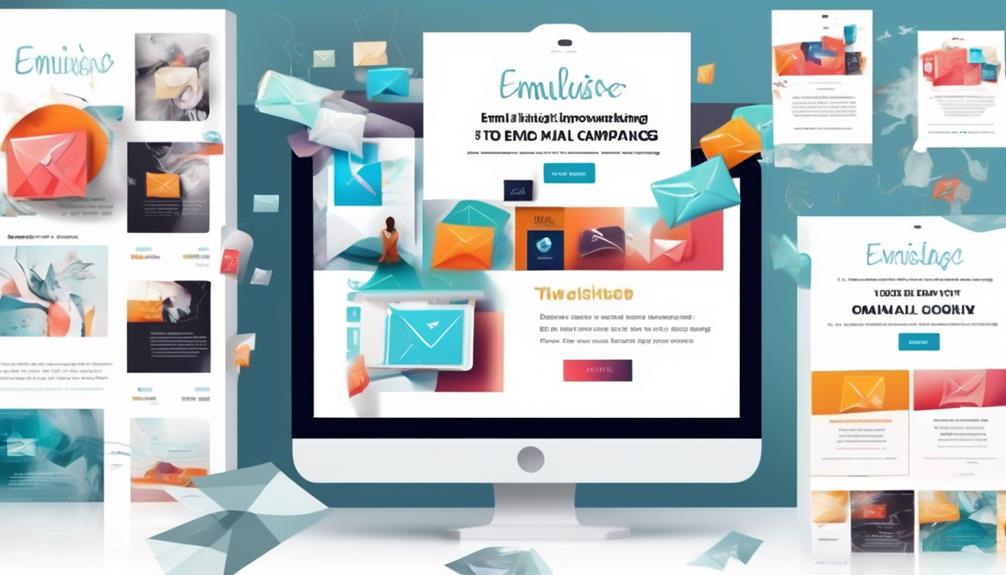
With email automation, we can effectively reach our target customers and deliver personalized communication that enhances product awareness. This allows us to connect with our audience on a more personal level, increasing brand recognition and understanding.
Targeted Customer Reach
To effectively increase product awareness among specific customer segments, targeted email automation tailors product features and benefits to individual preferences, ensuring timely and relevant information delivery.
With email automation, potential customers receive personalized content that resonates with their needs and interests. This targeted approach enhances the likelihood of engagement and conversion as individuals feel understood and valued.
Through the use of a marketing automation tool, businesses can strategically segment their audience and deliver tailored messages, showcasing the most relevant products to each group.
By leveraging automated emails, businesses can consistently and effectively communicate product updates and launches to interested customers, keeping them informed and engaged with the brand.
This targeted customer reach not only increases product awareness but also fosters a stronger connection between the business and its audience.
Personalized Communication
As we focus on personalized communication to increase product awareness, the targeted approach of email automation continues to play a pivotal role in tailoring product features and benefits to individual preferences, ensuring timely and relevant information delivery.
Through email automation, businesses can send automated emails that are specifically tailored to the recipient's interests and behaviors, providing them with relevant content that highlights the value and benefits of the products or services offered. This personalized communication fosters a deeper understanding of the product, effectively educating recipients and increasing their awareness.
Cost Optimization
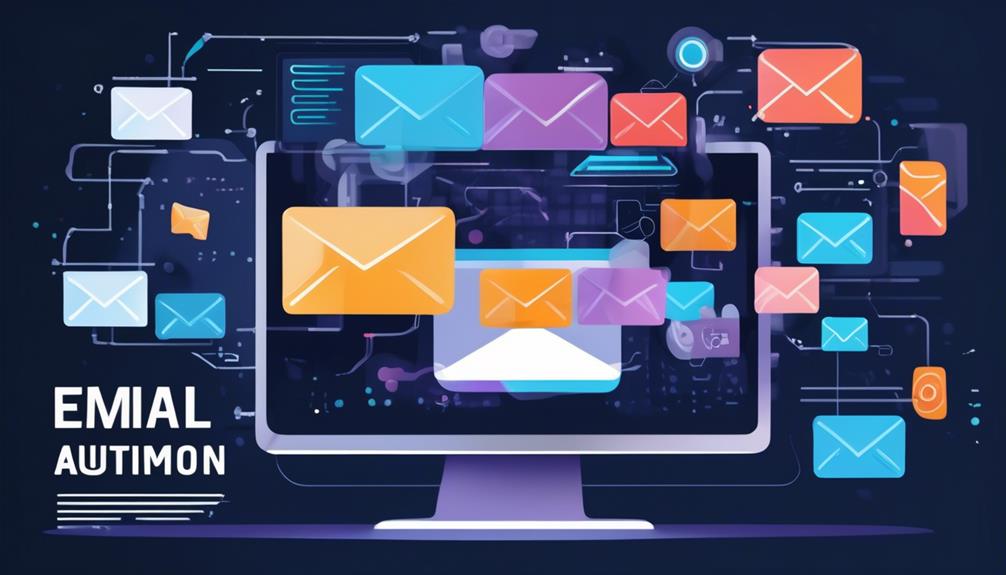
Harnessing email automation for cost optimization involves streamlining processes and maximizing efficiency to achieve significant savings. By leveraging email automation tools, businesses can save time and resources, leading to cost reduction and improved productivity.
With the use of marketing automation software, companies can streamline their operations and focus on strategic activities, ultimately leading to cost savings. Additionally, automating repetitive tasks associated with email marketing allows for better resource allocation, enabling businesses to direct their efforts and finances towards other critical areas.
Furthermore, email automation facilitates targeted and personalized communication, which can result in higher conversion rates and better return on investment. This means that by optimizing costs through email automation, businesses can maximize the impact of their marketing efforts within budget constraints.
Ultimately, the use of email automation not only saves time and resources but also helps in efficiently managing costs while achieving desired marketing outcomes.
Advanced Email Segmentation
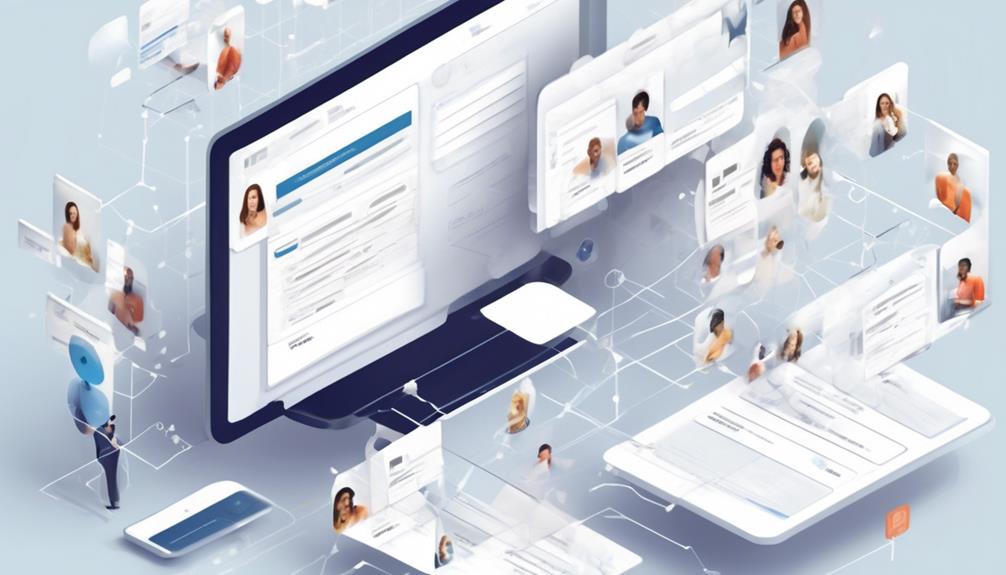
By employing advanced email segmentation, businesses can tailor their messaging to specific audience segments based on user behavior and attributes, leading to more personalized and engaging email campaigns. This approach enables the creation of highly targeted content, ensuring that the right message reaches the right audience at the right time.
For businesses with large sales teams, advanced email segmentation allows for customized messaging that aligns with each stage of the sales cycle, thereby enhancing the effectiveness of email campaigns in nurturing leads and driving conversions.
Additionally, advanced email segmentation can address customer questions and concerns by delivering relevant content based on their interactions with the brand. This not only increases customer satisfaction but also fosters stronger customer relationships. Furthermore, it allows for the delivery of personalized product recommendations, special offers, and tailored content, leading to improved engagement rates and higher conversion levels.
In the realm of email automation, advanced segmentation is a vital tool for optimizing the impact of email campaigns. It empowers businesses to deliver targeted and relevant content, thereby maximizing the effectiveness of their email marketing efforts.
Error Reduction
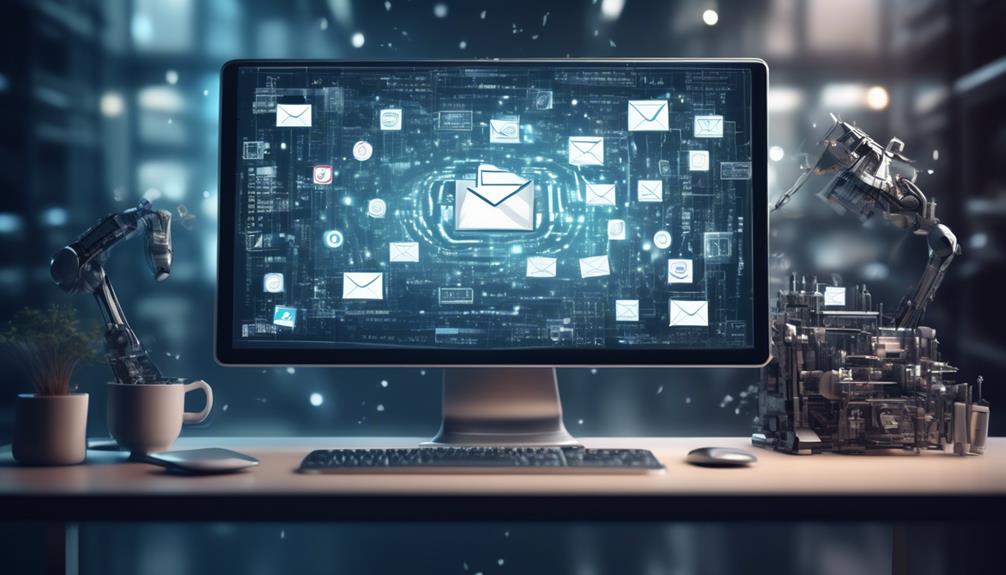
Reducing errors in email automation is essential for upholding professionalism and credibility in business communications. Implementing automated workflows minimizes the risk of errors in email marketing campaigns, ensuring that messages are consistently accurate and well-targeted. This not only saves time and resources by preventing the need for rework but also demonstrates an organization's commitment to precision and attention to detail.
Minimized mistakes in emails lead to improved customer trust and satisfaction, as recipients receive relevant and error-free communications. By automating repetitive tasks such as data entry and scheduling, the likelihood of human error is significantly reduced, allowing businesses to maintain a high standard of quality in their email communications.
Error reduction is a crucial aspect of email automation, as it not only enhances the efficiency of marketing efforts but also contributes to the overall professionalism and effectiveness of business communications.
Detailed Reporting
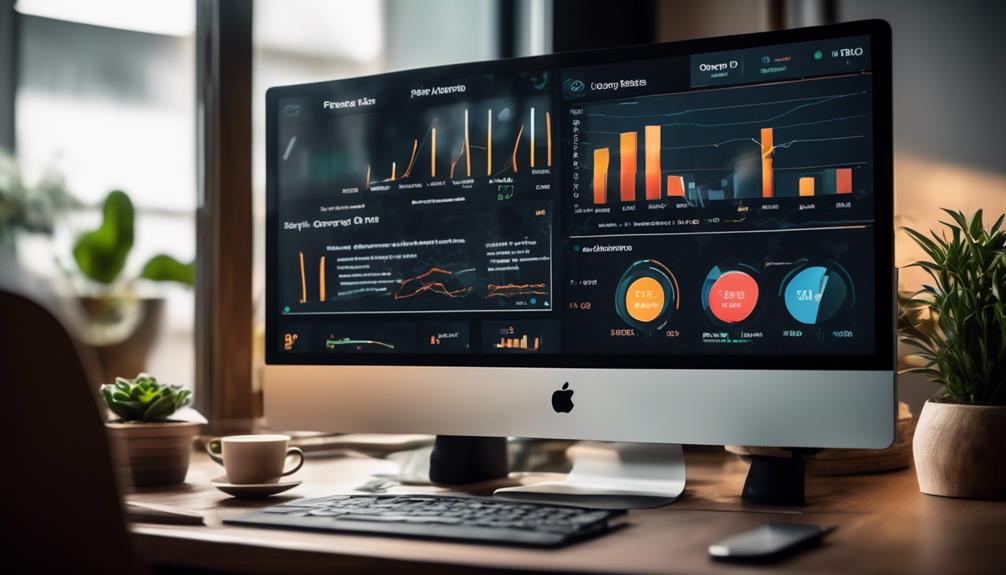
Detailed reporting in email automation provides valuable insights into the performance and engagement metrics of email campaigns, allowing businesses to make informed decisions and optimize their marketing strategies. By leveraging detailed reporting, businesses can gain a deeper understanding of how their email campaigns are performing and how recipients are engaging with their content. This level of insight is invaluable for refining and improving email marketing strategies, as it enables data-driven decision-making and the ability to tailor campaigns to better resonate with the target audience.
| Email Metrics | Description |
|---|---|
| Open Rates | Measure the percentage of recipients who opened the email |
| Click-Through Rates | Reflect the percentage of recipients who clicked on links within the email |
| Conversion Rates | Track the percentage of recipients who took a desired action after engaging with the email |
| User Behavior Analysis | Provides insights into how users interact with the email, informing future campaign optimization |
Through the use of these marketing tools, businesses can gather data on the effectiveness of their email automation strategies and identify areas for improvement. Detailed reporting also facilitates the implementation of feedback requests, allowing businesses to gather valuable input from recipients and further refine their email campaigns. This level of granularity in reporting empowers businesses to continuously optimize their email marketing efforts for enhanced performance and results.
Lead Nurturing

Implementing email automation for lead nurturing has revolutionized the way businesses engage and convert potential leads into loyal customers. With email automation, businesses can now send an email at just the right time, nurturing leads through personalized communication and timely follow-ups. This level of engagement not only improves lead nurturing and conversion rates but also enhances customer satisfaction by providing relevant and valuable content.
- Timely Follow-ups: Email automation allows businesses to set up automated follow-up emails based on customer interactions, ensuring that leads are consistently engaged and nurtured through every stage of the sales funnel.
- Personalized Communication: Through email automation, businesses can tailor their communication to individual leads, providing relevant content and offers that cater to their specific needs and interests.
- Efficient Lead Nurturing: Email automation streamlines the lead nurturing process, saving time and effort by automating repetitive tasks and allowing businesses to focus on creating meaningful connections with their leads.
Sales Team Support
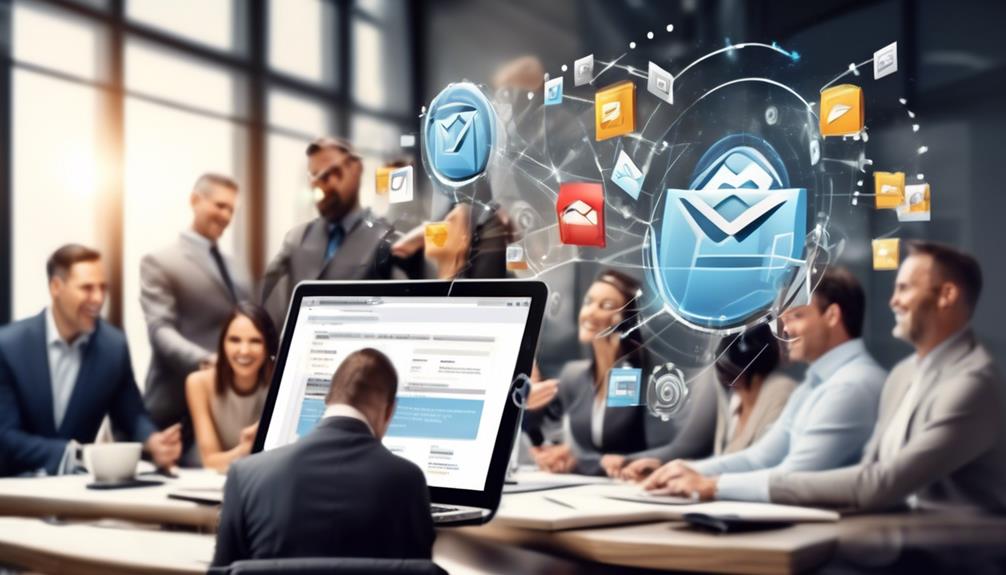
Sales team support through email automation provides valuable insights into lead engagement and readiness, enhancing overall sales performance and efficiency.
With email automation, our sales team can track which emails and content the leads have engaged with, allowing us to understand their interests and preferences. This insight enables us to tailor our approach to each lead, increasing the likelihood of successful lead generation and conversion.
Additionally, internal emails can be automatically triggered to notify the sales team of specific actions taken by leads, ensuring timely follow-ups and personalized interactions. By leveraging email automation for sales team support, we can effectively identify when a lead is ready to be approached, streamlining the sales process and maximizing our team's productivity.
Furthermore, this approach not only benefits lead generation but also enhances our interactions with existing customers, fostering stronger relationships and potentially increasing opportunities for upselling or cross-selling.
Brand Awareness
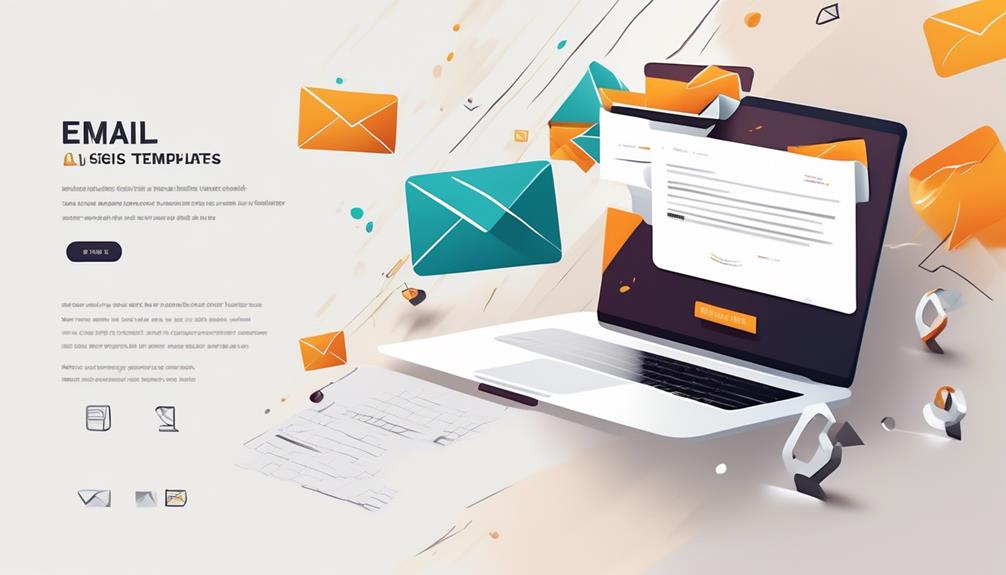
When it comes to brand awareness, email automation offers some compelling advantages.
We can reach a wider audience, consistently convey our message, and tailor our communication to specific recipients.
These points are vital for boosting our brand's visibility and recognition in the market.
Increased Reach
By automating email communications, businesses can consistently present professional and engaging content, effectively increasing brand awareness. Marketing automation not only reaches a wider audience but also attracts new leads by delivering targeted and relevant content. It allows businesses to appear organized and responsive, contributing to increased reach and brand recognition.
Moreover, automation enables better personalization, strengthening relationships and increasing engagement, which in turn enhances brand awareness. Relevant emails increase awareness and understanding of the business, leading to increased interest in what the business has to say. This boosts overall brand recognition and reputation through targeted and consistent communication, ultimately influencing customers to spend.
In essence, email automation not only increases brand visibility but also fosters deeper connections with the audience, driving business growth.
Consistent Messaging
Building on the enhanced reach achieved through email automation, consistent messaging plays a pivotal role in reinforcing brand awareness and recognition. By maintaining a unified voice and style across all marketing emails, businesses can establish a strong and memorable brand presence. Consistency in messaging ensures that important tasks, such as promotions or product launches, are effectively communicated to the audience, ultimately contributing to increased brand loyalty and customer retention. Below is a table summarizing the benefits of consistent messaging in email automation:
| Email Automation Benefits | Consistent Messaging |
|---|---|
| Professional-looking emails | Reinforces brand awareness |
| Organized and responsive appearance | Enhances brand recognition |
| Increased brand reputation | Boosts brand recognition |
| Better personalization | Increases engagement and trust-building |
| On-brand message delivery | Solidifies brand awareness |
Targeted Communication
Targeted communication through email automation is a powerful strategy for increasing brand awareness and resonance by delivering tailored messages to the right audience. With email automation, businesses can effectively reach new customers and strengthen relationships with existing ones through individualized emails. This personalized approach enhances brand recognition and encourages engagement, ultimately leading to improved brand loyalty.
By segmenting the audience and delivering relevant content, businesses can boost brand visibility and resonance, making a lasting impression on recipients. Through consistent and professional-looking emails, automation also helps in portraying an organized and responsive brand image, further contributing to increased brand awareness.
- Reach new customers
- Strengthen relationships with existing customers
- Boost brand visibility and resonance
– What are the Benefits of Using Salesforce for Email Automation?
Salesforce email automation can streamline marketing efforts, saving time and increasing efficiency. By automating follow-up emails and personalized messages, businesses can nurture leads and maintain a consistent brand presence. Additionally, the platform offers detailed analytics and reporting, allowing for targeted and effective communication with potential clients.
Better Customer Understanding
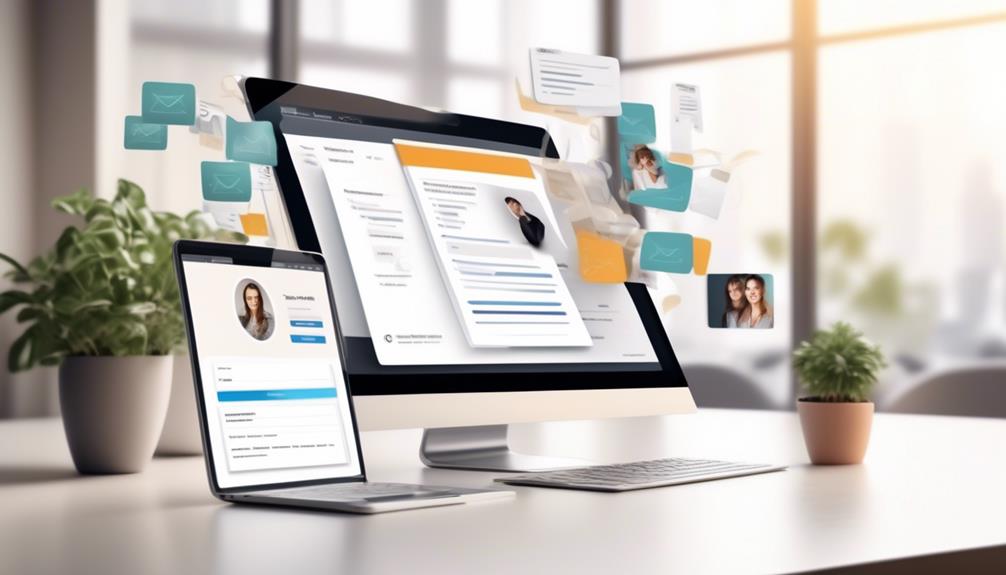
With email automation, understanding our customers becomes more insightful and comprehensive, allowing us to tailor our approach to their preferences and behaviors. Email automation provides numerous benefits for gaining a deeper understanding of our customers. By utilizing marketing automation tools, we can gather valuable insights into customer behavior and preferences, enabling us to create more personalized and targeted communication. Segmentation based on user behavior and attributes through email automation tools allows for a more thorough understanding of different customer segments. Additionally, the detailed reporting and analytics offered by email automation provide valuable information for understanding customer engagement and interaction with emails. Through the use of email automation, we can also track and analyze customer responses to personalized and targeted automated emails, further enhancing our understanding of their interests and preferences. Overall, the use of email automation workflows can significantly enhance our understanding of customer behavior, enabling us to improve customer engagement and satisfaction.
| Benefits of Email Automation | Customers Based |
|---|---|
| Detailed reporting and analytics | Deeper understanding of customer segments |
| Segmentation based on user behavior and attributes | Tracking customer responses to personalized emails |
| Personalized and targeted automated emails | Enhanced understanding of customer interests |
| Utilizing email automation workflows | Improved customer engagement |
| Insights into customer behavior | Enhanced customer satisfaction |
Frequently Asked Questions
What Are the Benefits of Email Automation?
We believe that email automation offers numerous benefits.
It improves efficiency, enhances customer experience, re-engages disinterested users, and promotes product awareness without overwhelming recipients. These advantages optimize costs and resources, making it a valuable tool for businesses.
By utilizing email automation, we can streamline our communication processes, personalize interactions, and effectively reach our target audience.
This ultimately leads to improved engagement, increased conversions, and a stronger brand presence.
How Effective Is Email Automation?
Email automation has proven to be incredibly effective. In fact, studies show that businesses using email automation experience a 451% increase in qualified leads.
This powerful tool streamlines marketing efforts, personalizes communication, and saves time and resources. It enables better targeting and segmentation, leading to higher engagement and customer satisfaction.
With detailed reporting and analytics, businesses can make data-driven decisions to enhance overall performance.
Which of the Following Is a Key Benefit of Using Email Automation?
Using email automation provides us with several key benefits.
It allows us to reach out to disengaged users and rekindle their interest, while also promoting product awareness without overwhelming our audience.
Additionally, it helps us optimize costs by automating email sends, leading to increased efficiency in our email campaigns.
Moreover, it enables us to improve customer experience through personalized automated emails, ultimately enhancing our overall marketing strategy.
What Are the Benefits of Email Sequence?
Email sequences offer a powerful way to nurture leads and guide them through a tailored journey. They provide a systematic approach to building relationships, delivering value, and driving desired actions.
With strategic timing and relevant content, email sequences can significantly increase engagement, conversions, and customer satisfaction. By automating this process, we can efficiently manage and optimize these interactions, ultimately enhancing our overall marketing efforts.
Conclusion
In conclusion, email automation offers a multitude of benefits, from streamlining marketing efforts to improving customer engagement. By integrating automation tools like Mailgun, businesses can efficiently nurture leads, support sales teams, and enhance brand awareness.
As we embrace the power of email automation, let's not overlook the opportunity to truly connect with our customers on a personalized level, creating meaningful and lasting relationships that drive success.
Erik – Email, SEO, AI Expert Writer Erik is the strategist, the thinker, and the visionary. His role at Influenctor is pivotal in integrating SEO with AI-driven content strategies. With an extensive background in email marketing and a profound understanding of search engine algorithms, Erik develops innovative strategies that elevate our client’s online presence. His work ensures that our content is seen, felt, and remembered.
Email Template
Crafting the Perfect Subcontractor Email Template
Craft a Subcontractor Email Template that will revolutionize your communication with subcontractors and catapult your project to new heights.

Navigating the intricate world of project management, the Subcontractor Email Template serves as a guiding light, leading us through the intricate web of negotiations and agreements. This template is a vital instrument that can either support the triumph of a construction project or result in its downfall.
With the potential to streamline communication and pave the way for a harmonious working relationship between main contractors and subcontractors, this template holds the key to unlocking a world of clarity and efficiency in our collaborative endeavors.
But there’s more to this template than meets the eye – it’s not just about sending emails; it’s about setting the stage for a seamless partnership.
Key Takeaways
- Clear communication is essential for ensuring understanding and avoiding errors or delays in a project.
- The email template serves as a reference point throughout the project, establishing clear expectations and requirements.
- Establishing expectations includes defining the scope of work, establishing timelines, and ensuring accountability for mistakes.
- Maintaining a professional tone and language in the email helps convey respect and professionalism.
Importance of Clear Communication
Clear communication is crucial for successful subcontracting, as it ensures that all parties involved understand expectations and requirements, leading to smoother project execution. When engaging in subcontracting, it’s imperative to establish a formal agreement that outlines the scope of work, timelines, deliverables, and responsibilities. This formal agreement serves as a reference point for all parties involved, providing clarity and minimizing the potential for misunderstandings.
By clearly defining the scope of work, all parties can align their efforts towards achieving the project goals effectively.
Effective communication also plays a vital role in setting clear expectations and requirements. It reduces the likelihood of errors or delays by ensuring that all parties are aware of the specific details and standards to be met. This level of clarity fosters transparency and trust among all parties involved, creating a conducive environment for successful project outcomes.
Additionally, clear communication enables swift conflict resolution and problem-solving, minimizing disruptions to the project timeline and budget. It ensures that all parties are fully aware of their responsibilities and accountabilities, ultimately contributing to the smooth execution of the project.
Key Components of the Email

When ensuring successful subcontracting, effective communication becomes the linchpin for establishing clear expectations and requirements, a principle that carries over into the key components of the email.
In crafting a subcontractor email template, it’s essential to include the following key components:
- Identification of Parties:
Clearly state the names and contact information of both the subcontractor and the main contractor.
- Scope of Work and Payment Details:
Define the specific scope of work, including timelines, deliverables, and any relevant specifications. Additionally, outline the payment details, such as invoicing procedures, payment terms, and any applicable milestones.
Effective communication in subcontracting requires attention to detail and clarity. The email template shouldn’t only convey essential information but also serve as a reference point for both parties throughout the duration of the project.
Establishing Expectations
How can we ensure that the subcontractor’s work aligns with the main contractor’s expectations and requirements?
Establishing clear expectations is crucial to the successful completion of any project. It’s essential to clearly define the scope of work, including any flexibility for variations to prevent disputes.
Timed start and completion dates should be established to allow for adequate margin in the main contractor’s schedule. Additionally, it’s important to ensure that the subcontractor’s standard of work meets or exceeds the requirements outlined in the main contract.
Coordination with other contractors is also vital to avoid delays and ensure smooth project progress. Furthermore, holding the subcontractor responsible for any mistakes that cause liability to the main contractor is essential for accountability.
By establishing these expectations from the outset, we can create a framework for successful collaboration and ensure that the subcontractor’s work aligns with our requirements.
This template can be used as a basis for the email communication in establishing these expectations.
Professional Tone and Language

In our communication with subcontractors, it’s imperative to employ a professional and respectful tone to uphold the standards of competence and courtesy expected in business interactions. When crafting emails or other correspondences, it’s important to:
- Use formal language: Avoid slang, informal language, and jargon to maintain a polished and business-appropriate tone. This ensures that our communication maintains a professional demeanor and upholds the respect due to our subcontractors. It also reflects positively on our organization and conveys a sense of competence and reliability.
- Be clear and concise: Use clear and concise language, avoiding unnecessary verbosity or ambiguity to ensure clarity and professionalism. Clarity in communication helps to prevent misunderstandings and ensures that our messages are effectively conveyed. Conciseness demonstrates respect for the recipient’s time and attention, fostering a positive and efficient working relationship.
Adhering to these guidelines will help to cultivate a professional and respectful tone in our communication with subcontractors, laying a solid foundation for successful collaboration.
Ensuring Timely Responses
As subcontractors, we prioritize prompt and effective responses to emails and inquiries from the main contractor to ensure seamless communication and collaboration. Timely responses are crucial in maintaining transparency and addressing any concerns promptly.
When addressing issues or disputes, we understand the importance of swift action to prevent delays in the project timeline. It’s essential to cooperate with other subcontractors and project stakeholders by responding promptly to coordination requests and scheduling changes. This ensures that the project progresses smoothly and according to plan.
Additionally, timely submission of required documentation, reports, and deliverables as per the agreed-upon schedule is vital to support project milestones. When responding to emails and inquiries, we aim to include all necessary details and provide clear and concise information. We ensure that the tone remains professional and respectful, addressing all parties by their appropriate names and titles.
When it comes to communication, we understand the significance of proactively sending emails and being vigilant about responding promptly to maintain effective collaboration.
Frequently Asked Questions
How Do I Send an Email to a Subcontractor?
We send an email to a subcontractor by clearly defining the scope of work and setting out the terms and conditions of the agreement. It should include identification of both parties, detailed scope of work, work location, and payment details.
Good faith negotiations, sending invoices, understanding the payment process, timing of payment request emails, and sending payment reminders are essential aspects to cover.
In case of non-payment, the email should escalate communication and consider third-party help or legal options.
For international payments, using global payroll software and tips for pitching to construction companies can be included.
How Do You Write an Email Offering Construction Services?
We approach writing an email offering construction services like laying a strong foundation – it’s essential for success.
We clearly outline the parties involved, scope of work, location, payment details, and our commitment to fair negotiations.
Our tone is professional, yet engaging, and we consistently follow up to showcase our value through relevant case studies.
This approach helps us build credibility and establish connections with construction professionals.
What Is a Letter of Intent for a Subcontractor?
We believe a letter of intent for a subcontractor is a crucial document in construction projects. It outlines agreed terms between main contractors and subcontractors and covers essential elements of a construction contract.
The letter of intent includes a detailed scope of works, subcontract price, and payment terms. Key issues that it addresses are outlining the subcontractor’s scope of work, start and completion dates, and ensuring the work meets the main contract’s standards.
How Do You Write an Email Soliciting a Business?
We write an email soliciting a business by starting with a compelling subject line.
Next, we introduce ourselves and our company, providing a brief overview of who we are and what we do.
Following the introduction, we clearly outline the benefits of our product or service. This includes explaining how it solves a specific problem or meets a particular need that the recipient may have.
To encourage a response, we include a call to action in the email. This could involve requesting a meeting, phone call, or further discussion to explore potential opportunities for collaboration.
Finally, we end the email with a polite and professional closing, expressing gratitude for the recipient’s time and consideration.
This approach helps to engage the recipient right from the start and effectively conveys the value proposition of our offering.
Can I Use the Subcontractor Email Template for Magento 2?
Yes, you can use the Subcontractor Email Template for Magento. It is designed specifically for Magento 2 and can help you streamline your subcontractor communication. This template allows you to send professional and customized emails to your subcontractors, saving you time and effort.
Conclusion
In conclusion, with this subcontractor email template, communication between main contractors and subcontractors will surely be crystal clear and without any issues.
It’s not like there’s a shortage of things to worry about on a construction site, so at least this is one less thing to stress about.
Happy subcontracting!
Natali – Editor in Chief (Strategy and Mastery, AI Expert) Natali, our Editor in Chief, is the driving force behind our content’s strategic direction. With a keen eye for detail and a deep understanding of market trends, Natali ensures that our content is top-notch and strategically aligned with our client’s goals. Her expertise in AI helps to seamlessly integrate advanced technology into our marketing strategies, pushing the boundaries of conventional marketing.
Email Template
Effective Change of Email Address Template Guide
Wondering how to smoothly transition to a new email address? This comprehensive template has everything you need to make the change effortless.

We have all experienced times when we are presented with different paths to choose from, each leading in a different direction. The decisions we make in these moments have the potential to greatly impact our future.
When it comes to changing our email address, that sense of transition and potential for new opportunities is palpable. But how do we navigate this change seamlessly, ensuring that our contacts are informed and the transition is smooth?
We have some valuable insights and a comprehensive template to guide you through this process, making the transition as effortless as possible.
Key Takeaways
- Understanding the audience is crucial for tailored communication.
- Clear and concise messaging helps prevent misunderstandings.
- Maintaining a professional tone fosters respect and clarity.
- Personalization techniques enhance meaningful communication.
Audience Identification
Understanding our audience is crucial for crafting tailored and impactful communication that resonates with their needs and preferences. When it comes to the 'Change of Email Address Template', audience identification plays a pivotal role in ensuring that our messaging effectively reaches the right recipients.
By identifying our audience, we gain valuable insights into their demographics, interests, and pain points. This understanding enables us to create content that resonates with them, leading to higher engagement and response rates.
In the context of email address change, knowing our audience allows us to communicate the process of updating their information in a manner that's clear, concise, and relevant to their needs. Moreover, targeting the right audience ensures that our message reaches the people who are most likely to be interested in the information about the change of email address or the process for updating their new email address.
Ultimately, audience identification is crucial for building relationships and loyalty with our audience by delivering personalized and relevant communication that addresses their specific concerns regarding the change of email address.
Clear Message Drafting

As we aim to effectively reach our audience with the 'Change of Email Address Template', mastering the art of clear message drafting becomes paramount. Clear message drafting ensures that our email about the change of address is easily understood and effectively conveys our thoughts. To help you master this skill, we recommend the following:
- Use simple language: Avoid jargon and complex sentences to make the email easy to understand for all recipients.
- Structure your message: Organize the information logically, starting with the most important details about the change of email address.
- Avoid ambiguity: Be clear and concise in your wording to prevent any misunderstandings regarding the change of address.
- Make it scannable: Use bullet points or numbered lists to make important points stand out and allow for easy comprehension.
Professional Tone Maintenance
Maintaining a professional tone in all communications is essential for fostering respect and clarity in our interactions. When informing others about an email change, it's crucial to uphold a professional demeanor. Please update your records with our new email address: [NewEmailAddress@company.com].
By using Professional Tone Maintenance, we ensure that our message is conveyed with the utmost professionalism and respect. It also helps in maintaining a consistent and professional image across all forms of communication.
When addressing matters related to personal or employee-related issues, it's important to uphold a respectful and professional tone to convey the message effectively. Professional Tone Maintenance templates provide a structured and organized format for all communication needs, ensuring that our communications are clear and concise.
This approach not only fosters a professional work environment but also helps in upholding a level of professionalism in all our interactions. Using Professional Tone Maintenance is crucial for upholding a consistent and professional image, and it ensures that our communications are respectful and maintain a high level of professionalism.
Personalization Techniques
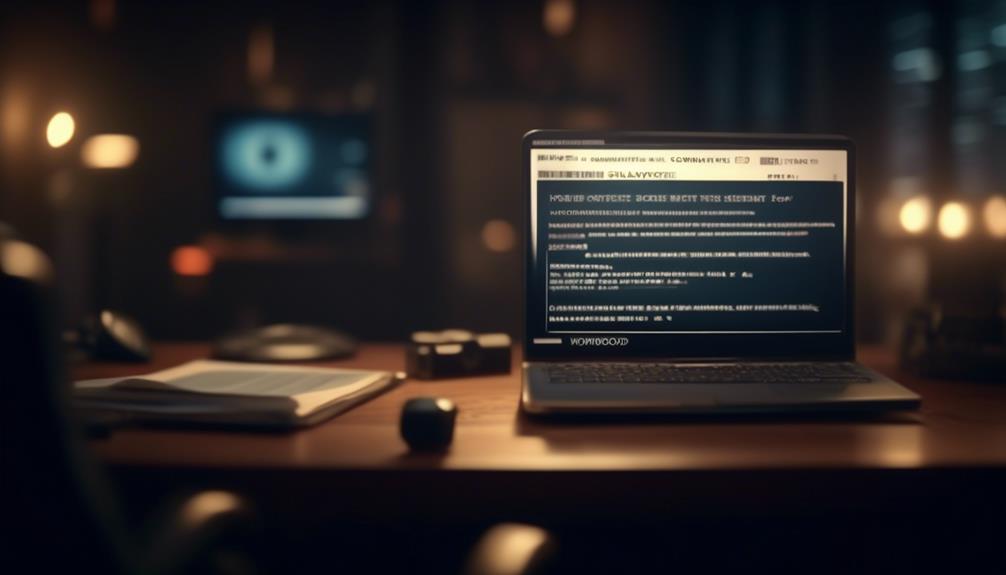
We can enhance our communication by implementing personalized techniques that cater to individual preferences and needs. Personalization adds a personal touch to our messages, making them more meaningful and effective. Here are four techniques for achieving this:
- Customized Order Options: Utilize customized order options for personalized letters, ensuring that each message is tailored to the recipient's specific needs and interests.
- Variety of Templates: Use a variety of love letter templates for personalization, allowing for a range of emotions and expressions to be conveyed based on the recipient and the context of the message.
- Employee Communication: Maintain effective communication with returning employees by covering various personal matters related to them, such as acknowledging their achievements or addressing any concerns they may have.
- Professional Time Off Requests: When requesting time off, use templates to ensure a professional and formal way to request time off, while also promoting a healthy work-life balance for employees.
Review and Sending Process
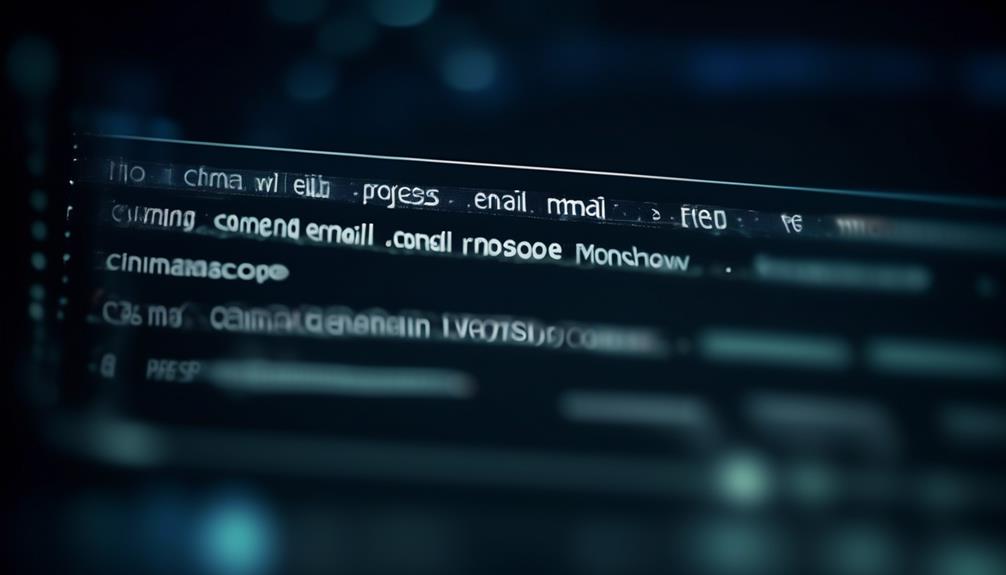
Making the shift to the review and sending process, we can ensure that our personalized communication maintains its effectiveness and professionalism. This process is crucial as it involves checking the content and details of the email before hitting the 'Send' button.
By carefully reviewing the subject line, body content, attachments, and recipient list, we guarantee that the email is accurate, error-free, and aligns with company standards. This meticulous review not only enhances the quality of our communication but also fosters a sense of reliability and attention to detail. It's imperative to double-check the email to maintain consistency and professionalism in all our correspondence.
Once the review process is completed, we proceed with sending the email to the intended recipients. While this may seem like a routine step, it's essential to ensure that the email is sent from the correct email account and that all recipients are accurate. This final stage of the process marks the culmination of our efforts to deliver precise and polished communication.
Frequently Asked Questions
How Do You Announce an Email Address Change?
We announce an email address change by sending a clear and concise notification to our contacts.
It's essential to provide necessary information and express gratitude for their understanding.
We must also ensure that important contacts are notified and update the email address on all platforms.
Additionally, we should inform personal and professional contacts, update our email address on social media profiles, and check automated email subscriptions or services.
How Do I Write a Letter to Change My Email Address?
We write a letter to change our email address for the following reasons:
- Clearly stating the reason for the change
- Providing the new email address
- Expressing gratitude for understanding
- Encouraging recipients to update their contact information
It's important to maintain a positive tone throughout the letter and include a polite closing. We always ensure that the recipients have all the necessary information to continue correspondence seamlessly.
Dear [Recipient's Name],
I hope this email finds you well. I am writing to inform you that I will be changing my email address. The reason for this change is [state reason].
Please update your contact information with my new email address: [new email address]. This change will be effective from [date].
I would like to express my gratitude for your understanding and cooperation during this transition. I understand that updating contact information can be an inconvenience, and I appreciate your willingness to make this change.
To ensure that we can continue our correspondence seamlessly, I kindly request that you update your records with my new email address as soon as possible. This will help avoid any disruptions in communication.
Thank you once again for your understanding and cooperation. If you have any questions or need further information, please do not hesitate to contact me at my new email address.
Best regards,
[Your Name]
How Do I Notify Contacts of Change of Email Address?
We notify contacts of a change of email address by sending a clear and concise email. We provide the new email address and any relevant details, and we thank recipients for their understanding.
It's important to update our email address on social media profiles and check for any automated email subscriptions or services. This ensures everyone has our updated contact information.
How Do You Inform Customers of Address Change?
We inform customers of an address change by crafting a clear and concise email notification.
It's crucial to communicate the change effectively to avoid any confusion or missed communications.
Our aim is to ensure that our customers seamlessly transition to the new email address without any disruptions.
We take this responsibility seriously, and our proactive approach is key to maintaining strong relationships with our valued customers.
Conclusion
As we embrace change and adapt to new email addresses, we also embrace the opportunity to stay connected and informed.
Just as our email addresses evolve, so do we. Embracing change allows us to grow, learn, and connect in new and exciting ways.
Let's continue to stay open to change and the possibilities it brings.
Natali – Editor in Chief (Strategy and Mastery, AI Expert) Natali, our Editor in Chief, is the driving force behind our content’s strategic direction. With a keen eye for detail and a deep understanding of market trends, Natali ensures that our content is top-notch and strategically aligned with our client’s goals. Her expertise in AI helps to seamlessly integrate advanced technology into our marketing strategies, pushing the boundaries of conventional marketing.
How to Write Email
Make Your Message Stand Out with a P.S. in Email

Welcome to our guide on how to effectively utilize the “P.S.” in your emails to grab attention. In today’s digital age, it is essential to master the art of creating impactful emails to effectively convey your message, engage your audience, and achieve your goals. This article explores the significance and function of “P.S.” in email marketing. We will showcase examples of its usage, discuss the best practices for incorporating it, and offer tips on crafting a compelling “P.S.” to elevate your email communications.
- Using “P.S.” in emails can enhance your message and capture recipients’ attention.
- “P.S.” can be used as a powerful tool in email marketing campaigns to drive engagement and conversions.
- Adding a personal touch and using “P.S.” strategically can make your emails more effective.
- Understanding when and how to use “P.S.” properly is important to maintain professionalism and avoid miscommunication.
- An effective “P.S.” can optimize email engagement and help achieve your communication objectives.
Why and How to Use “P.S.” in Your Emails
When it comes to email communication, adding a “P.S.” (postscript) can be a powerful tool to capture your recipient’s attention and make your message stand out. In this section, we will explore the meaning of “P.S.” and its significance in email marketing. We will also provide examples of how to effectively use “P.S.” to enhance your emails, as well as discuss when it is appropriate to include a “P.S.” in your emails or letters. Additionally, we will delve into how using a “P.S.” can be valuable for adding punctuation and clarity to your messages.
Understanding the Meaning of “P.S.”
The term “P.S.” originates from the Latin phrase “post scriptum” meaning “written after.” In email communication, a “P.S.” is an additional message or thought that is added after the main body of the email. It is often used to highlight important information, provide additional context, or create a sense of urgency.
Using “P.S.” in Email Marketing
In email marketing, a well-placed “P.S.” can help drive engagement and increase the effectiveness of your campaigns. By strategically using a “P.S.” at the end of your marketing emails, you can reinforce your key message, highlight a special offer or call-to-action, and create a sense of personal connection with your audience.
Examples of Using “P.S.” to Enhance Your Emails
Here are a few examples of how you can use “P.S.” to enhance your emails:
- Add a personal touch: In your follow-up emails, include a “P.S.” to mention something specific about the recipient, showing that you value their individuality.
- Create urgency: Use a “P.S.” to emphasize a limited-time offer or a deadline for taking advantage of a promotion.
- Include a call-to-action: Use a “P.S.” to urge your recipients to take a specific action, such as clicking on a link or replying to the email.
- Reinforce your main message: Summarize the key point of your email in the “P.S.” to ensure it sticks with your recipient.
When to Use “P.S.” in Your Emails or Letters
Knowing when to use a “P.S.” in your emails or letters is essential for maximizing its impact. Here are a few instances where including a “P.S.” can be effective:
- Adding an afterthought: If you have an additional idea or information that is relevant to your message but not crucial to the main body of your email, a “P.S.” is the perfect place to include it.
- Highlighting important details: Use a “P.S.” to draw attention to key information that you want your recipient to remember, such as a meeting time or an important attachment.
- Enhancing readability: If you have a lengthy email, you can use a “P.S.” to break up the text and provide a concise summary or final thought.
Using “P.S.” for Added Punctuation and Clarity
In addition to its traditional purpose, a “P.S.” can also be used for added punctuation and clarity in your messages. By using a “P.S.” to address any remaining thoughts or questions, you ensure that the rest of the email or message flows smoothly and with a clear structure.
Next, we will delve into best practices for using “P.S.” in email communication to ensure you make the most out of this powerful tool.
Best Practices for Using “P.S.” in Email Communication
When it comes to email communication, adding a personal touch can go a long way in making your message stand out. One effective way to achieve this is by utilizing the “P.S.” (postscript) technique. By strategically placing a “P.S.” at the end of your email, you can capture your recipient’s attention and convey important information that might have been missed in the body of the email.
Writing “P.S.” in the Body of the Email
When using the “P.S.” technique, it is crucial to ensure that the content in the body of the email is concise and to the point. The purpose of the “P.S.” is to provide additional information or emphasize a key point, so make sure the body of the email is clear and complete without relying solely on the “P.S.” for important details.

Adding a Personal Touch with “P.S.”
One of the advantages of using “P.S.” in email communication is the opportunity to add a personal touch. You can use the “P.S.” to express gratitude, share a personal anecdote, or address the recipient by name. This personal touch can help create a stronger connection and make your email feel more sincere and authentic.
Considerations for Using “P.S.” in Email Marketing Campaigns
If you are incorporating “P.S.” in your email marketing campaigns, it is essential to ensure that the placement of the “P.S.” is strategic and relevant. A well-placed “P.S.” can draw attention to a call-to-action, highlight a limited-time offer, or provide additional information that encourages engagement and click-through rates.
Ensuring Proper Use of “P.S.” in Your Email or Letter
To ensure the proper use of “P.S.” in your email or letter, it is important to keep the following guidelines in mind:
- Keep the “P.S.” short and concise to maintain its impact.
- Use the “P.S.” to convey important information or emphasize a key point.
- Avoid using “P.S.” multiple times in a single email or letter, as it may diminish its effectiveness.
- Proofread your email or letter to ensure that the “P.S.” is grammatically correct and supports your overall message.
Utilizing “P.S.” as an Additional Means of Communication
Besides its traditional use in email communication and letter writing, “P.S.” can also be utilized as an additional means of communication in various contexts. For example, you can include a “P.S.” in a personal email to express your appreciation, ask a follow-up question, or make an extra point. The versatility of “P.S.” makes it a valuable tool for effective communication in various scenarios.
Tips for Writing an Effective “P.S.”
Now that we understand the importance of using “P.S.” in our email communication, let’s explore some tips for writing an effective “P.S.” that captures attention and engages recipients. By following these guidelines, you can make the most of this powerful tool and optimize email engagement.
How to Make the Most of “P.S.” in Your Email’s Main Body
When crafting your email, strategically place the “P.S.” in the main body to create a lasting impression. Use it to summarize your key message or highlight a call to action. By placing the “P.S.” at the end of your email, it ensures that even skimmers and readers with short attention spans will notice and remember your message.
Adding an Afterthought with “P.S.”
The “P.S.” is not just reserved for important information; it can also be used to add a personal touch and create a sense of familiarity with your recipients. Use the “P.S.” to share a relevant anecdote, ask about their well-being, or mention something specific to your relationship. This way, you not only capture attention but also strengthen the connection with your audience.
Understanding the Importance of “P.P.S.” in Email Communication
While “P.S.” is widely known, “P.P.S.” is a lesser-known gem that can further enhance your email communication. Use “P.P.S.” to include a secondary message, an additional call to action, or an update related to your main email. The unexpected nature of “P.P.S.” can pique curiosity and encourage recipients to thoroughly read your message.
Using “P.S.” in Personal Email Messages
“P.S.” is not limited to business or professional emails. It can also be a valuable addition to personal email messages. Whether you’re writing to a friend, family member, or significant other, the “P.S.” can inject personality, humor, or a heartfelt sentiment. Use it to share an inside joke, express your love, or even include a fun fact.
Optimizing Email Engagement with “P.S.”
To ensure maximum impact, keep your “P.S.” concise and focused. Use attention-grabbing language, such as introducing a limited-time offer or a compelling benefit. Additionally, consider using formatting techniques such as bold or italics to make your “P.S.” visually stand out. By optimizing your “P.S.”, you can captivate your recipients and increase email engagement.
Remember, the “P.S.” is a powerful tool that can improve the effectiveness of your email communication. Use it strategically, test different approaches, and pay attention to the responses you receive. With the right implementation, your “P.S.” can make a lasting impression and drive desired actions from your recipients.

Conclusion
As we conclude our exploration of using “P.S.” in email communication, it becomes evident that this simple yet powerful technique can significantly enhance your messages. By incorporating a well-crafted “P.S.” at the end of your emails, you can capture the attention of your recipients, make your message stand out, and increase engagement.
The key takeaway from this article is that “P.S.” serves multiple purposes in email communication. It can be used as an effective marketing tool by adding a personal touch or emphasizing a call-to-action. Additionally, it can be utilized to provide further information or clarify the main body of the email, making it an essential communication tool.
Remember, strategic use of “P.S.” can make a lasting impression on your recipients and differentiate your emails from the rest. Whether you are sending a professional email, a marketing campaign, or a personal message, incorporating a well-crafted “P.S.” can help you achieve your communication goals.
So, don’t underestimate the power of the postscript. Start incorporating “P.S.” in your emails today, and witness the positive impact it has on your email communication. By effectively using “P.S.”, you can ensure that your messages are noticed, remembered, and acted upon.
To write “P.S.” in an email, simply add it at the end of your message after the main body of the email. It can be used to add an afterthought, additional information, or a call to action. The “P.S.” should be short and to the point, grabbing the reader’s attention and reiterating a specific point. Using “P.S.” in your emails can be an effective way to add a personal touch and make your message stand out. It can also serve as a last chance to make a strong impression or drive a specific action. “P.S.” can be used in both personal and professional settings to enhance your email communication.
Yes, “P.S.” can be a valuable tool in email marketing campaigns. It can help create a sense of urgency, highlight additional benefits of a product or service, or encourage recipients to take action. Make sure to use “P.S.” strategically and in a way that aligns with your overall marketing message.
“P.S.” can be used in various situations, such as adding important information that was initially forgotten, emphasizing a key point, or adding a personal touch. It is generally placed at the end of the email or letter, but it can also be used within the body of the message if it is relevant. Use “P.S.” when you want to capture the reader’s attention and leave a lasting impression.
To make the most of “P.S.” in the main body of your email, use it sparingly and strategically. It can be used to reinforce a specific point, provide additional information or resources, or highlight a call to action. Keep the “P.S.” short and concise, ensuring that it adds value to the overall message.
FAQ
How do I write “P.S.” in an email to make my message stand out?
Why should I use “P.S.” in my emails?
Can I use “P.S.” in email marketing campaigns?
When is it appropriate to use “P.S.” in my emails or letters?
How can I make the most of “P.S.” in my email’s main body?
Erik – Email, SEO, AI Expert Writer Erik is the strategist, the thinker, and the visionary. His role at Influenctor is pivotal in integrating SEO with AI-driven content strategies. With an extensive background in email marketing and a profound understanding of search engine algorithms, Erik develops innovative strategies that elevate our client’s online presence. His work ensures that our content is seen, felt, and remembered.
-

 Email Marketing1 month ago
Email Marketing1 month agoThe Convergence of Email and Chat: Integrating Messaging Platforms in Your Strategy
-

 Email Marketing1 month ago
Email Marketing1 month agoHyper-Personalization: Using Big Data to Create 1:1 Email Experiences
-

 Email Marketing2 months ago
Email Marketing2 months agoPredictive Analytics in Email Marketing: Anticipating Subscriber Behavior
-

 Email Marketing2 months ago
Email Marketing2 months agoThe Psychology of Color in Email Templates: Choosing the Right Palette
-

 Email Marketing3 months ago
Email Marketing3 months agoHow to Set Up a Dedicated IP for Your Email Campaigns
-

 Email Marketing3 months ago
Email Marketing3 months agoMobile-Optimized Emails: Technical Best Practices for Responsive Design
-

 Email Marketing2 months ago
Email Marketing2 months agoHow to Create ADA-Compliant Email Templates
-

 Email Marketing2 months ago
Email Marketing2 months agoStorytelling in Email Marketing: Crafting Compelling Narratives












